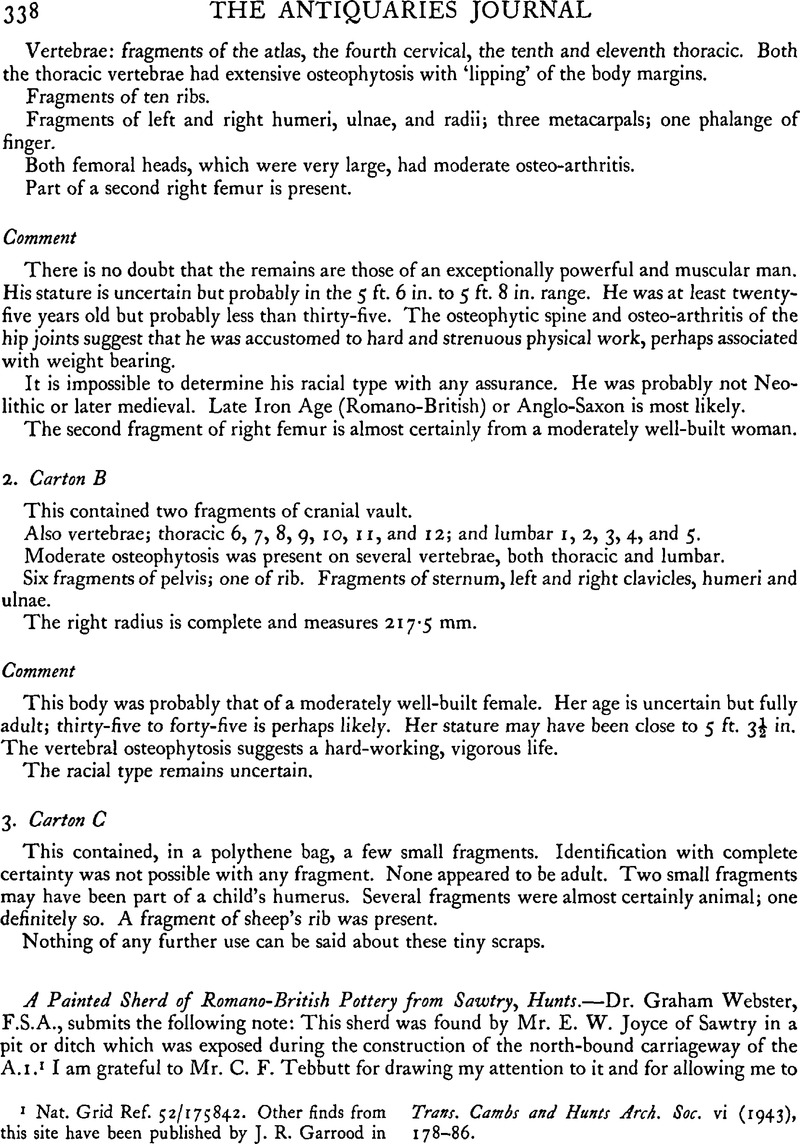No CrossRef data available.
Article contents
A Painted Sherd of Romano-British Pottery from Sawtry, Hunts.
Published online by Cambridge University Press: 29 November 2011
Abstract

- Type
- Notes
- Information
- Copyright
- Copyright © The Society of Antiquaries of London 1966
References
page 338 note 1 Nat. Grid Ref. 52/175842. Other finds from this site have been published by Garrood, J. R. in Trans. Cambs and Hunts Arch. Soc. vi (1943), 178–86Google Scholar.
page 339 note 1 ‘A Note on Romano-British Pottery with Painted Figures’, Antiq. Journ. xxxix (1959), pp. 91–95.Google Scholar For the wreath-like feature on the top of this sherd cf. ibid., pl. XXIV, figs. A and B.
page 339 note 2 So much of the face is exposed that we must consider the possibility of this being a cap. But the deliberate upturn and line parallel to the curve of the helmet may be the draftsman's indication of a projecting crest. The effect of reducing this to its basic terms can be seen in the bronze votive plaque from Woodeaton, Toynbee, J. M. C., Art in Britain under the Romans, 1964 pl. LXXVIIGoogle Scholar and also in Oxoniensia, xix (1955), p. 29,Google Scholar no. 6, pl. 36. A conical helmet is worn by one of the hunters on the Walbrook silver casket, Toynbee, J. M. C., Art in Roman Britain, 1963, pl. IIIGoogle Scholar.
page 339 note 3 At Huntsham near , Ross-on-Wye, J.R.S. li (1961), 172, fig. 20 and fn. 81Google Scholar. The cross-bar prevents the spear from running through the boar and being broken or wrenched out of the hands of the attacker while the boar may still be dangerous, Diener-Schönberg, A., ‘Knebel an Jagdblankwaffen’, Zeitschrift für historische Waffenkunde, iii, 351Google Scholar; this type of spear was later to be adapted for fighting and became known as the Flügellanze, M. Ellehauge, The Spear, Tøjhusmuseets Skrifter, 5, 1948.
page 339 note 4 I am grateful to Professor J. M. C. Toynbee for her comments on this piece.
page 339 note 5 The sherd is at present on loan in the Peterborough Museum.


